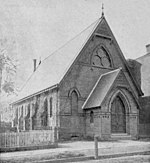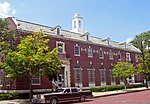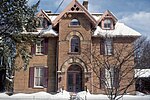Dutch Reformed Church (Newburgh, New York)

The Dutch Reformed Church is one of the most prominent architectural landmarks in Newburgh, New York. It was designed by Alexander Jackson Davis in 1835 in the Greek Revival style just after the dissolution of his partnership with Ithiel Town. It is his only surviving church in that style and is considered to be his latest building still standing that largely reflects his original vision. The church stands at 132 Grand Street, just north of the Newburgh Free Library. Its historical importance comes from not just over a century of use as church, but its centrality in the struggle by modern preservationists to save and restore the city's many landmark buildings. Today it is a National Historic Landmark. It was almost razed in the late 1960s, and even today is far from completely restored. The property was added to the National Register of Historic Places in 1970, aiding its rescue from demolition.
Excerpt from the Wikipedia article Dutch Reformed Church (Newburgh, New York) (License: CC BY-SA 3.0, Authors, Images).Dutch Reformed Church (Newburgh, New York)
Grand Street,
Geographical coordinates (GPS) Address External links Nearby Places Show on map
Geographical coordinates (GPS)
| Latitude | Longitude |
|---|---|
| N 41.504452777778 ° | E -74.008983333333 ° |
Address
Dutch Reformed Church
Grand Street 134
12550
New York, United States
Open on Google Maps









